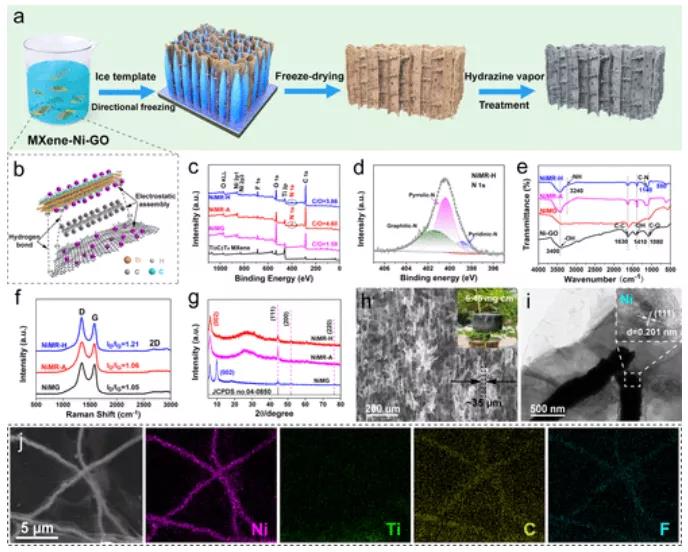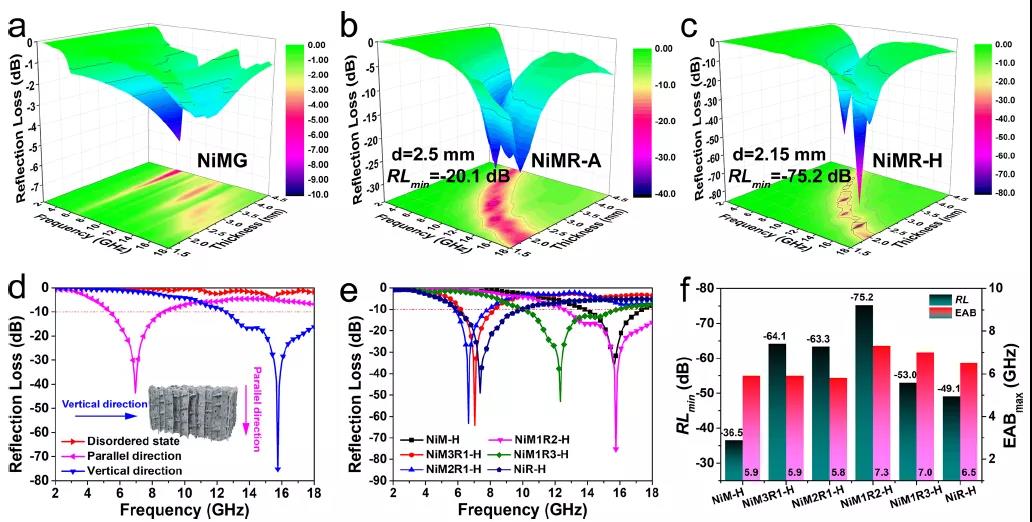
hotline:
17715390137
Tel/Wechat:
18101240246 (Technology)
0512-68565571
Email:mxenes@163.com (Sales Engineer)bkxc.bonnie@gmail.com
Scan the code to follow or search the official account on WeChat:
2D Materials Fronrier After paying attention,
click on the lower right corner to contact us,
Enter enterprise WeChat.
Professional Services Online

With the advent of the 5G era, a variety of intelligent electromagnetic devices have come out one after another. However, the advent of a new era is both an opportunity and a challenge. While enjoying the happiness that smart devices have brought, we also face more confusion: on the one hand, the existence of electromagnetic waves will interfere with the normal operation of some ultra-precision instruments; on the other hand, long-term exposure to electromagnetic radiation Downstream will also pose a serious threat to the human body’s own health management. In view of this, the development of absorbing materials has gradually shown more far-reaching significance. Under normal circumstances, researchers prepare microwave absorbers or absorbers with excellent absorbing properties by designing the structure of carbon materials, metal oxides, and ferrites or by different combinations of the above three materials. However, it should be noted that the above research results more or less have their own shortcomings (such as high density, poor weather resistance, narrow effective absorption frequency band, large addition amount, thick matching thickness, etc.). In fact, in the context of the new era, in order to cope with practical applications in harsh environments, people have also put forward higher requirements for the additional properties of absorbing materials (such as hydrophobicity, thermal insulation, flame retardancy, etc.). challenge. Therefore, the development of a new type of lightweight, broadband absorbing material with excellent performance in all aspects is still a major problem facing the industry.
Recently, Professor Liu Chuntai and Associate Professor Feng Yuezhan from the School of Materials Science and Engineering of Zhengzhou University and Professor Zhang Haobin from Beijing University of Chemical Technology have prepared a new type of three-dimensional MXene/graphite anchored by magnetic Ni nano-chains through a directional freezing method combined with a hydrazine vapor reduction process. Ene composite aerogel (NiMR-H). The research results show that the aerogel has excellent microwave absorption due to the excellent impedance matching, multi-polarization and electro-magnetic coupling effect conferred by the designed orientation structure and the heterogeneous interface of the dielectric/magnetic components. performance. What’s interesting is that NiMR-H with a density of only 6.45 mg cm-3 exhibits the best electromagnetic wave absorption characteristics compared to the MXene-based absorbing materials reported so far, and its minimum reflection loss can be low. To -75.2 dB (that is, an electromagnetic wave absorption rate of up to 99.999 996% can be achieved). At the same time, its maximum effective absorption bandwidth can reach 7.3 GHz. On this basis, NiMR-H also has ideal mechanical properties, high hydrophobicity and excellent thermal insulation properties, ensuring its potential as a stable and durable absorbing material. The research was recently published in the internationally renowned journal "ACS Nano" as "Multifunctional Magnetic Ti3C2Tx MXene/Graphene Aerogel with Superior Electromagnetic Wave Absorption Performance".

Graphic analysis:
The preparation of NiMR-H aerogel is mainly divided into two steps (Figure 1a): First, the Ni/MXene/graphene oxide (GO) ternary composite hydrogel with oriented structure is prepared by the directional freezing method of ice template. After freeze-drying, a Ni/MXene/GO (NiMG) ternary composite aerogel with a three-dimensional porous structure is obtained; then, the aerogel with an oriented structure is placed in an appropriate hydrazine vapor for reduction modification, and finally obtained Ni/MXene/reduced graphene ternary composite aerogel is denoted as NiMR-H. It is confirmed by chemical structure characterization (Figure 1b-g): First, the content of oxygen-containing functional groups on the surface of NiMR-H modified by hydrazine reduction is significantly reduced, that is, the density of the conjugated conductive area of graphene in the composite component is increased; second The redox process of hydrazine and NiMG aerogel also makes the surface of NiMR-H doped with nitrogen heteroatoms of different configurations. Therefore, the synergy of these two aspects is beneficial to increase the contribution of the conductance loss and the dipole polarization loss when NiMR-H interacts with electromagnetic waves. It is confirmed by physical structure characterization (Figure 1h-j): NiMR-H presents an oriented porous structure along the direction of ice crystal growth, and the ultra-high porosity gives it a low density; furthermore, Ni nanochains can interact through electrostatic interactions The strong attachment to the RGO/MXene framework further provides the composite aerogel with interface polarization loss capability.

Figure 1. Schematic diagram of the preparation of NiMR-H aerogel (a) and its related structural characterization (b-j).
As shown in Figure 2, compared to NiMG without hydrazine reduction and NiMG-A highly reduced with NH3, NiMR-H aerogel exhibits ultra-low reflection loss (-75.2 dB) and lower matching thickness ( 2.15mm), and a wide effective absorption band (7.3GHz), and such excellent absorbing performance is mainly due to the dipole and defect polarization relaxation provided by NiMR-H surface defects, disordered sites and residual functional groups. Yu and appropriate impedance matching (Figure 2a-c). Moreover, NiMR-H still exhibits stable electromagnetic wave absorption capacity after 160 days of storage. Furthermore, the researchers also proposed that, compared with the horizontal direction of NiMR-H aerogel, its vertical orientation direction can use a longer distance and interconnected conductive network to carry out multiple scattering of electromagnetic waves, so it has more advantages. Excellent absorbing performance. At the same time, this work also explored the influence of different MXene/GO component ratios on the microwave dissipation ability of NiMR-H aerogel in the vertical orientation direction, and further optimized its absorbing performance (Figure 2d-f).

Figure 2. Comparison of the absorption performance of NiMR-H aerogel (c) and control aerogel (a, b) samples. The influence of the content of different MXene/GO components on the absorbing performance of NiMR-H (d-f).
In order to further clarify the microwave dissipation mechanism, the researchers conducted a series of detailed analyses on the electromagnetic parameters obtained from the test. Through the finite element simulation of the Cole-Cole circle, electrical coupling/magnetic coupling effect, off-axis electron hologram, and calculation and analysis of dissipation constant and impedance matching in Fig. 3, the excellent performance of NiMR-H aerogel is shown It is mainly due to the synergy between the macro and micro scale structures: on the macro scale, the NiMR-H aerogel surface has a good impedance matching due to the gentle reduction of hydrazine vapor and the regular porous cell structure, which in turn makes more electromagnetic waves Can enter the aerogel smoothly, rather than reflecting on the surface. Subsequently, the three-dimensional electrical/magnetic coupling network is used to capture and attenuate the incident electromagnetic wave, and to further enhance the dissipation of the incident electromagnetic wave through internal multiple scattering; on the microscopic scale, the synergy plays a role in the absorption and attenuation mechanism of NiMR-H Important role. In the oriented cell structure composed of MXene, RGO and Ni nano-chains, the incident electromagnetic wave has the dielectric loss (multiple heterogeneous interface polarization, dipolar polarization, conduction loss) and magnetic loss (magnetic resonance, magnetic coupling effect). , Eddy current loss, etc.) under the synergistic effect of dissipation. Furthermore, strong and broadband microwave absorption is achieved at the lowest filler addition (0.64 wt.%).

Figure 3. Electromagnetic wave absorption mechanism analysis of NiMR-H aerogel (a-h), comparison with other works (i-j).
In order to meet the practical application of absorbing materials in harsh environments, the researchers also explored the functionality of NiMR-H. As shown in Figure 4, NiMR-H has ideal mechanical properties, high hydrophobicity and excellent thermal insulation properties, ensuring its potential as a stable and durable microwave absorbing material.

Figure 4. Weather resistance test of NiMR-H aerogel, such as hydrophobicity, thermal insulation and mechanical properties.
to sum up:
The author used a two-step process of directional freezing combined with hydrazine vapor reduction to prepare a multifunctional magnetic Ti3C2Tx MXene/graphene composite aerogel with an electromagnetic wave absorption rate of up to 99.999 996% (ideal mechanical properties, high hydrophobicity and excellent thermal insulation performance). Wave materials have shown great application potential in the future aerospace, stealth weapons, and electromagnetic protection for human health management!
Paper link:
https://pubs.acs.org/doi/10.1021/acsnano.0c09982

| Reminder: Beijing Beike New Material Technology Co., Ltd. supplies products only for scientific research, not for humans |
| All rights reserved © 2019 beijing beike new material Technology Co., Ltd 京ICP备16054715-2号 |